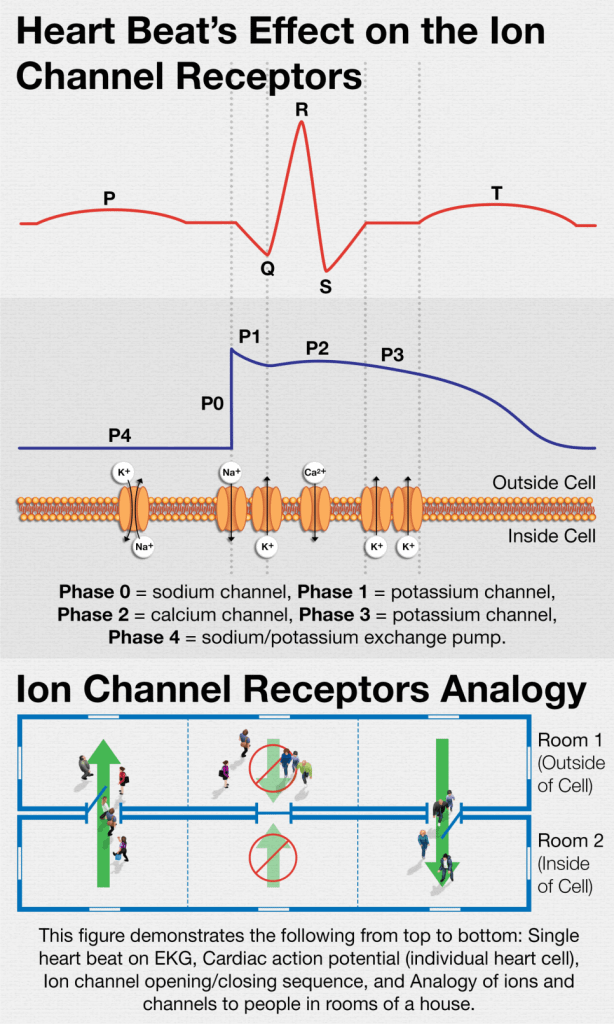Understanding heart rhythm disorders can be a challenging feat. The electrical system is complex, involving many different cells, mechanisms, and genes.
This is especially true for AFib. In living with AFib, we often say that each person’s case represents a perfect storm of symptoms and circumstances – unique to them. Developing AFib is often a combination of nature (genes) meeting nurture (triggers and atrial fibrillation risk factors).
It can be helpful to think of the electrical system of the heart as a house with people moving in and out of multiple rooms and doorways connected to each other. We can use the following analogy: the house is the electrical system, the rooms are the heart’s electrical cells, the doorways are ion channel receptors, and the people are electrolyte ions that move through the ion channel receptors. An ion channel is a protein located on the cell membrane which controls the movement of sodium, potassium, magnesium, and calcium. This movement generates electrical fields that create the heartbeat.
When an individual heartbeat starts, the sodium channel ion receptor opens because there’s more sodium outside the cell than inside. When a given doorway opens, the room – or cell – is flooded. And when the number of ions hits a particular threshold, the door shuts and another one opens – causing a domino effect which drives the electrical impulse.
What happens when the mechanisms of our heart go wrong?
A cardiac arrhythmia. And AFib is the most common type worldwide. One of the biggest challenges our hearts can face is the risk of cardiac arrhythmia. At a mechanistic level, a cardiac arrhythmia is a result of abnormalities in the ion channels described above. These abnormalities occur in the perfect storm of nature meeting nurture. For example, a person with obesity may have an underlying predisposition to AFib. As that person’s weight increases, the risk of AFib increases.

Some forms of cardiac arrhythmias are benign in nature, such as premature heartbeats. But there is also a range of much more malignant forms, like ventricular tachycardia and fibrillation, which are the most common cause of sudden cardiac death.
Cardiac arrhythmias occur primarily because of three basic mechanisms: reentry, triggered activity, and abnormal automaticity. Arrhythmias can take place because of any of these mechanisms or even a combination of them – the perfect storm indeed.
Atrial Fibrillation Management
A cornerstone of atrial fibrillation management is drug therapy. And just as doorways can be blocked in the proverbial house, drugs can block or affect the ion channel receptors described above. This can affect the ways that electrical impulses are generated and whether they are allowed through an ion channel or blocked from entering.
In my practice as a cardiac electrophysiologist, I have often found that analogies to everyday things help to explain complex concepts. Like the following: The heart is an engine with valves, electricity, and plumbing. AFib is like electrical cancer or arthritis of the electrical system.
Learn more about heart rhythm disorders on my AFib blogs. Keep up-to-date with the latest in heart health, wellness, and technology by joining my Facebook group.



